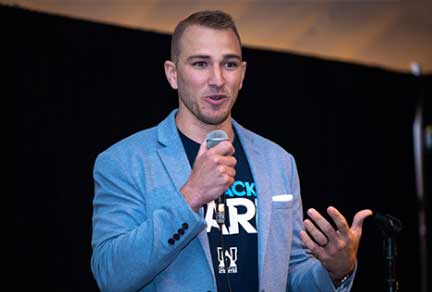Using innovative trial designs to accelerate drug oncology development
Accelerating clinical trials takes on special urgency in oncology. Patients and their families are seeking treatment for life-threatening diseases; drug developers understand that imperative acutely, whether they are large enterprises bringing therapies to market or smaller biotech companies pursuing validation for a new compound.
Toward that end, Parexel is advancing innovative approaches to optimize study design and streamline protocols.
One key aspect of these new clinical trial designs is that they permit changes after initiation, such as amending how patients are categorized and treated. These designs can cover all aspects of safety and efficacy with options for interim milestones to facilitate decision-making.
Flexible trial designs and master protocols
Traditional approaches typically explore a single therapy for a single indication. Master protocols take a more flexible approach. There are several different types, which generally fall into the following categories:
- Basket designs examine the use of a single therapy against multiple indications, incorporating, for example, genomic information, severity, and background characteristics.
- Umbrella designs examine the use of multiple therapies against a single disease.
- Platform designs examine multiple therapies against multiple indications, with plans incorporating future additions and removal of therapies or indications.
Many trials today include multiple components that can be run in parallel or sequentially. The protocol can be restructured or compartmentalized to accommodate related or independent components. One option is to develop a master protocol as a single overarching design to evaluate multiple hypotheses, with different components or trial designs introduced later in the process with the benefit of insights. With this approach, the general goal is to improve efficiency by standardizing procedures in developing and evaluating different interventions, thereby achieving milestones faster. In fact, the U.S. Food and Drug Administration (FDA) offered new guidance on master protocols in December 2023.1
Under a common infrastructure, the master protocol may be differentiated into multiple parallel sub-studies, including standardized operational structures, patient recruitment and selection, data collection, analysis, and management. For example, we can slice the tumors into slivers and identify genetic disposition in a small fraction of patients. These data can be used again for molecularly characterized populations and dramatically accelerate development.
There are many advantages to creating a master protocol. For example:
- Sub-studies can be rolled up into one study, creating efficiencies.
- Transitions are seamless through modules, sub-studies, and phases.
- Investigators, sites, and patients have more options for choosing participation.
- Development plans are clarified for regulators.
Real-world data
Randomized control trials, the gold standard for determining efficacy and safety, can be used for these flexible designs. Note that real-world data (RWD) can be added to a trial protocol as a tool for innovative approaches, particularly in rare diseases, and to support the regulatory pathway. In some cases, RWD can support development through external control arms, which can be especially practical when a trial involves an invasive procedure. For example, Parexel proposed a hybrid design for a Phase III study for brain cancer in which survival is the endpoint. The proposed treatment comprises a brain catheter; in this case, patients would understandably be reluctant to agree to be randomized to a placebo arm. We recommended a control arm using RWD to mimic the invasive intervention. In this hybrid design, one-third of the data is derived from the randomized control arm, and two-thirds derived from real-world data. This approach has been accepted by the FDA.
Key considerations for implementation of innovative approaches
However, flexible trial designs add significantly to trial complexity, and operational implementation is a fundamental consideration when deciding on a protocol structure. There are tradeoffs. For example:
- How many components will be included at the beginning of the study?
- Will sites will be involved in all components?
- Are future modifications planned based on data from other studies of data accrued from the current study?
Keep in mind that the more flexible the study, the more complex it is; achieving the right balance is crucial to determine whether efficiencies are paying off. The added cost is another prime consideration. However, even in the case of a biotech company with limited capital, a flexible trial design could confirm efficacy and safety as an early milestone and potentially lead to a second round of financing.
An example of a seamless basket trial in early development
Parexel uses seamless designs, including basket designs, to determine safety and efficacy of a drug in treating different tumor types.
The trials are designed to optimize the commonalities among the cancer types – for example, the adverse-event data collection is all the same. The case reports are identical except for the specific analysis of each tumor type.
The approach combines three studies in one: dose escalation, dose optimization, and dose expansion. First, the question about safety is answered in dose escalation; then, the dose is optimized; finally, the dose expansion – the basket design – is tested in several cohorts. For example, Cohort A could be breast cancer, cohort B could be gastric cancer, and Cohort C could be non-small cell lung cancer, depending on the mode of action. This indicates where the drug works best, in which tumor type, and in which setting. That applies to both solid and hematological tumors. We use Bayesian optimal phase and predictive probabilities to choose the best dose. Once two of the best doses are identified, we continue with those and discontinue the other.
When performed seamlessly, this approach can significantly shorten development times. It can also mitigate risk by reducing the number of patients who are exposed to what are still experimental doses.
Best practices
Following is a snapshot of best practices that Parexel has identified in our extensive work on flexible trial designs across many indications.
- Design protocols with clear objectives in mind.
- Carefully consider potential operational challenges before deciding on protocols.
- Recognize that with flexibility comes complexity and additional cost, and ensure the proper balance with the efficiencies gained.
- Establish strong cross-functional collaboration, including a robust site network and solid communications approach.
- Consult with regulatory authorities early in the process. The bar can be high for accepting RWD. Sharing data with regulators at certain milestones can yield encouraging results.
These are our latest insights on the evolving use of flexible study design in oncology research.
Parexel is deeply involved with regulatory authorities and leading drug developers in this regard, particularly in the use of innovative statistical methods, which can be effectively applied to other therapeutic areas.
We are encouraged by the collaboration of many stakeholders in finding ways to speed new treatments to patients who await them.
This article is part of a series about trends and opportunities in advancing treatments for oncology. The next article in this series will examine the potential of neoadjuvant therapy in the treatment of solid tumors.
At Parexel Biotech, we’ve integrated our wide breadth of services across all our business units. That gives us the speed and flexibility to deliver anything you need right when you need it, with all your services coordinated by a single point of contact. Together, we’ll integrate scientific, clinical, regulatory, and commercial considerations early on and throughout development giving your treatment the surest pathway and to mitigating risks. Let Parexel Biotech connect every step of development with you. Get the flexibility and adaptability it takes to impact patient lives. Connect with us today.
About the author
A senior leader at Parexel, Martin is a biostatistician with more than 40 years of drug development experience in the pharmaceutical industry, including tenure at Sanofi. He has strong regulatory experience with the Food and Drug Administration, European Medicines Agency, and local agencies, including Japan, and has supported numerous submissions and labeling negotiations. He leads a group of senior-level biostatistics consultants, supporting the planning and execution of biostatistics services in all phases of drug and device development and continuously looking for innovative approaches to bring effective and safe treatments to patients faster.
References
1 Master Protocols for Drug and Biological Product Development, FDA, December 2023.
Related Insights
Playbook
Advancing radiopharmaceutical development: Integrated clinical trial expertise mitigates risk
Dec 3, 2025
Blog
Making cell and gene therapy more accessible in the treatment of solid tumors
Jun 4, 2024
Article
Embarking on the Next Era of Precision Medicine
May 11, 2021
Blog
Highlights from ASCO: Our experts weigh in
Jul 13, 2021
Blog
Parexel names first Patient Ambassador
Jun 17, 2022
Blog
What Do the Next 10 Years Hold for CRISPR?
Jul 27, 2022
Blog
SITC Crisis in Clinical Research Virtual Summit – Collaborating to Drive Change
Aug 24, 2022
Podcast
Driving change in Cell & Gene Therapies: Key learnings from the SITC Virtual Summit
Sep 19, 2022
Article
Q&A Project Optimus: What you need to know
Oct 11, 2022
Article
Five strategies for meeting the requirements of Project Optimus and improving the chances of approval
Nov 10, 2022
Blog
Innovative modeling method could speed patient access to critical IO therapies
Jan 4, 2023
Blog
A hybrid model supports globally diverse site participation for a retrospective cancer study
Jul 24, 2023
Related Insights
Playbook
Advancing radiopharmaceutical development: Integrated clinical trial expertise mitigates risk
Dec 3, 2025
Blog
Making cell and gene therapy more accessible in the treatment of solid tumors
Jun 4, 2024
Article
Embarking on the Next Era of Precision Medicine
May 11, 2021
Blog
Highlights from ASCO: Our experts weigh in
Jul 13, 2021
Blog
Parexel names first Patient Ambassador
Jun 17, 2022
Blog
What Do the Next 10 Years Hold for CRISPR?
Jul 27, 2022
Blog
SITC Crisis in Clinical Research Virtual Summit – Collaborating to Drive Change
Aug 24, 2022
Podcast
Driving change in Cell & Gene Therapies: Key learnings from the SITC Virtual Summit
Sep 19, 2022
Article
Q&A Project Optimus: What you need to know
Oct 11, 2022
Article
Five strategies for meeting the requirements of Project Optimus and improving the chances of approval
Nov 10, 2022
Blog
Innovative modeling method could speed patient access to critical IO therapies
Jan 4, 2023
Blog
A hybrid model supports globally diverse site participation for a retrospective cancer study
Jul 24, 2023



